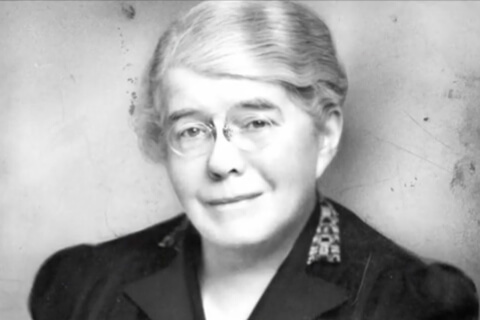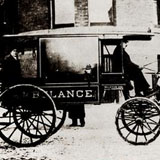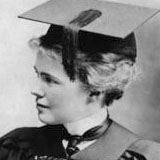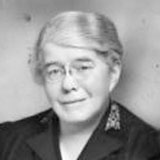Biography: Dr. Emily Dunning Barringer

Year: 1902
Achievement: Dr. Emily Barringer was the first woman ambulance physician at New York City's Gouverneur Hospital.
Year: 1902
Achievement: Dr. Emily Barringer was the first woman medical resident at New York City's Gouverneur Hospital.
Emily Dunning Barringer harnessed the benefits of a good education and gained the mentorship of a leading woman physician of her era, Dr. Mary Putnam Jacobi, to overcome barriers in her own career and to make it possible for other women physicians to serve their country during World War II. After first being denied an appointment at New York's Gouverneur Hospital, she was later allowed to take up the position and became the hospital's first woman medical resident and ambulance physician. During World War II, Barringer lobbied Congress to allow women physicians to serve as commissioned officers in the Army Medical Reserve Corps, and in 1943, the passing of the Sparkman Act granted women the right to receive commissions in the army, navy, and Public Health Service.
Emily Dunning Barringer was born in Scarsdale, New York, to Edwin James Dunning and Frances Gore Lang. She grew up in a well-to-do New York family that fell on financial hard times when she was about ten years old, forcing her father to seek his fortune in Europe. Barringer's mother knew that a young woman without an education or profession was at great disadvantage, so when a well-meaning friend suggested that young Emily might become a milliner's apprentice her mother said, "That settles the question. You are going to go to college." Dr. Mary Putnam Jacobi recommended Cornell University's medical preparatory course. Barringer's uncle, Henry Sage, a founder of Cornell, agreed to pay her tuition, and other family friends helped with expenses. When Barringer graduated in 1897, she chose to attend the College of Medicine of the New York Infirmary, which merged with the new Cornell University School of Medicine during her sophomore year.
Emily Dunning married Benjamin Barringer the day after she finished her residency in 1904. The couple had a son and a daughter. After a short stay in Vienna, where both Barringers attended classes, they returned to New York, where Emily Barringer took a position on the gynecological staff at New York Polyclinic Hospital. She was also an attending surgeon at the New York Infirmary for Women and Children, where she specialized in the study of venereal diseases. During World War I she was vice chair of the American Women's Hospitals War Service Committee of the National Medical Women's Association (later the American Medical Women's Association). She spearheaded a campaign to raise money for the purchase of ambulances to be sent to Europe. In 1902 she became the first woman medical resident at Gouverneur Hospital and the first woman ambulance physician to work there. Her experience in getting and keeping her medical residency, with the help of Mary Putnam Jacobi, M.D., and others, illustrates the many barriers that women doctors still faced in 1900. Barringer's fellow medical residents assigned her difficult "on call" schedules and ward duties, and harassed her in other ways. Her autobiography illustrates the value of support from mentors, family, friends, nursing staff, and the public. She was a novelty for the Lower East Side neighborhood she served, and a good story for the New York papers.
After World War I, she became an attending surgeon at Brooklyn's Kingston Avenue Hospital and subsequently its director of gynecology. She was a member of the American Medical Association and a fellow of the American College of Surgeons and of the New York Academy of Medicine. In 1941 she was elected president of the American Medical Women's Association (AMWA), and was in the news once more as she fought for women's right to hold appointments in the Army and Navy Medical Corps during World War II. While women could serve as contract surgeons in the Women's Army Auxiliary Corps, as they were not commissioned officers they did not receive the accompanying military benefits available to men. Barringer chaired a special AMWA committee that lobbied Congress for military commissions for women physicians, and in April 1943, the Sparkman Act was signed into law.

Dr. Emily Dunning Barringer
Dr. Emily Dunning Barringer
Dr. Emily Dunning Barringer became the first woman to ride with ambulance crews as an emergency physician, in New York City, working from a horse-drawn wagon in the neighborhoods of the Lower East Side. Originally, Emily Dunning thought she would become a nurse. It was Dr. Mary Putnam Jacobi who recommended Cornell University's medical preparatory course for her education instead. Dr. Jacobi believed Emily Dunning would choose to become a doctor. In 1897 she enrolled at the College of Medicine of the New York Infirmary. The day after she completed her residency, in 1904, she married Dr. Benjamin Barringer. Quickly, she became frustrated that his prospects were so much better than hers. She said, 'He could count on a splendid training in one of the big general hospitals... with post-graduate work abroad, in whatever line he elected... And I? What did I see ahead?' Her opportunities seemed greatly limited. Again, Dr. Mary Putnam Jacobi advised Dr. Barringer, urging her to take the competitive internship exams held by New York's large area hospitals even though women had never been allowed to compete. Together, the two women pressured several hospitals to open their internships to women. Dr. Barringer became the first woman medical resident at Gouverneur Hospital in New York City. Her male colleagues harassed her assigning her difficult schedules for on-call and ward duties. She continued with her work, despite these difficult circumstances and was widely reported in the local papers as something of a novelty as a woman ambulance physician. During World War II, Dr. Barringer made headlines again, lobbying Congress for military commissions for women physicians. While women could serve as contract surgeons in the Women's Army Auxiliary Corps, they were not commissioned employees, and so were not given the same benefits as men. In 1943, the Sparkman Act was signed into law, allowing women the same benefits as men in the Army and Navy. Dr. Emily Dunning Barringer created a legacy of helping women achieve equal status, in the medical profession, and in the U.S. military; Opportunities passed on to the generations to come.






